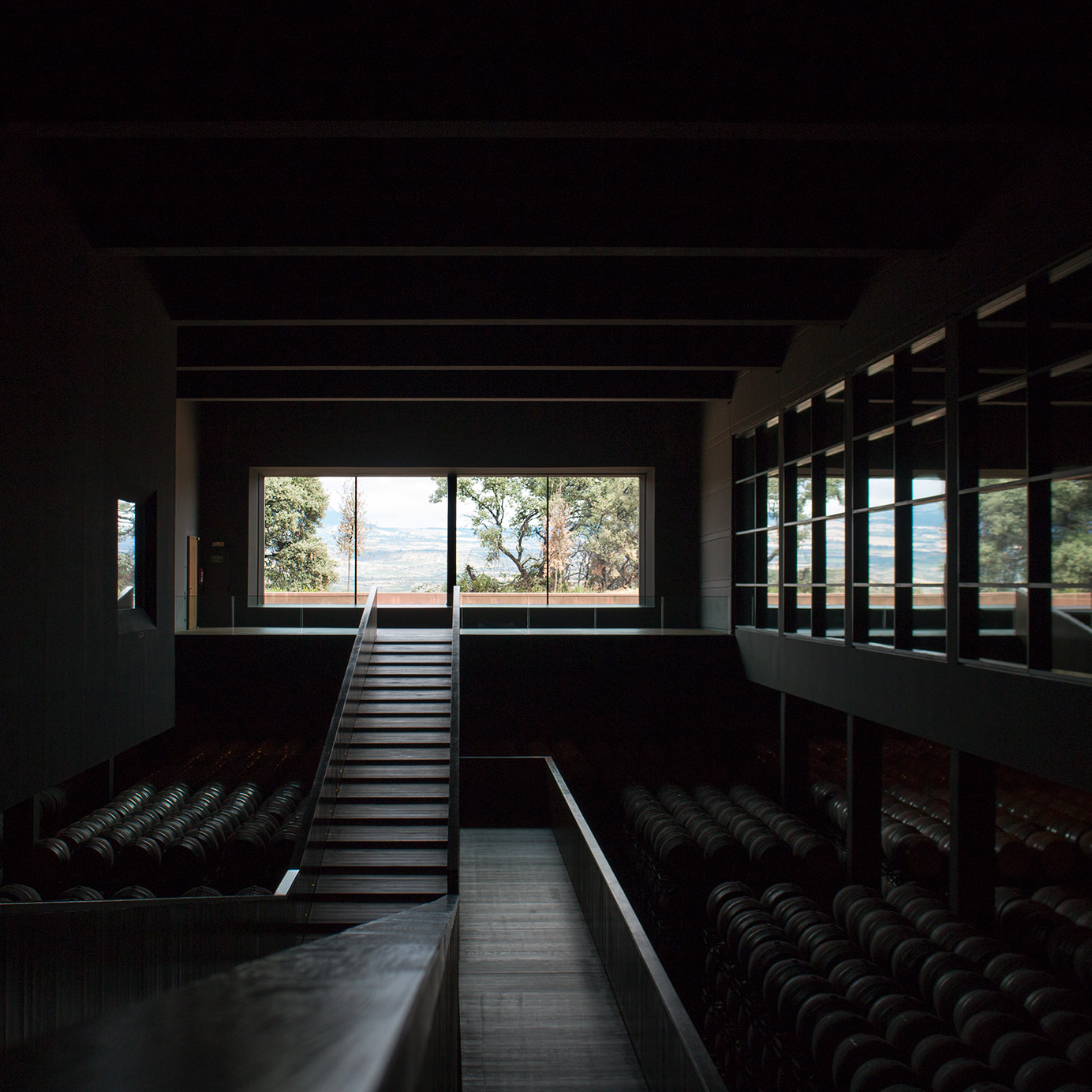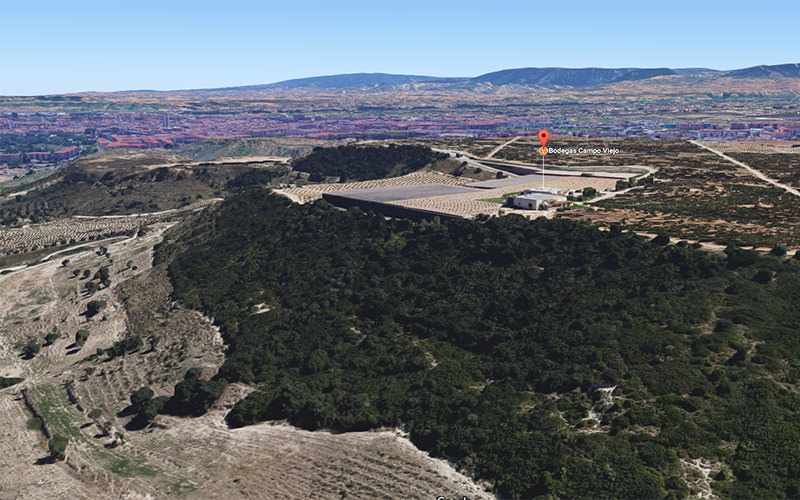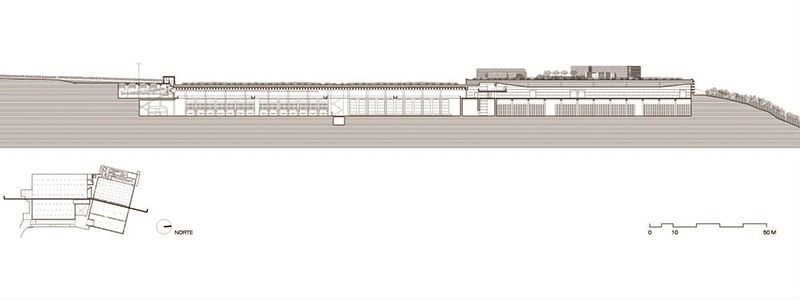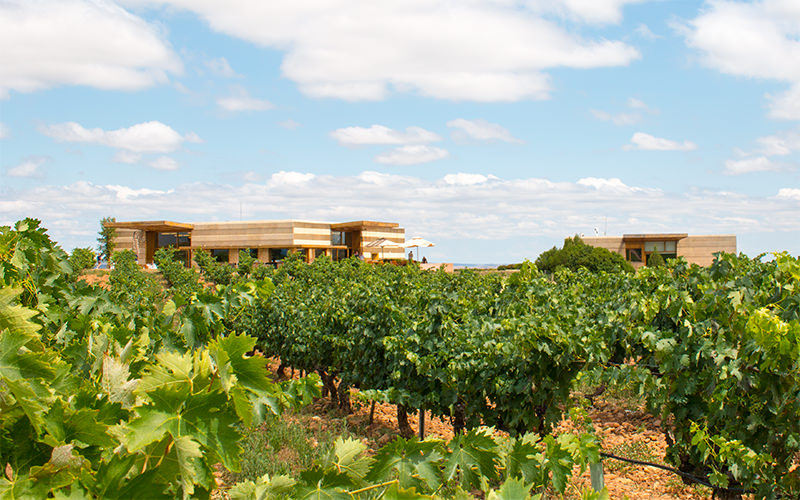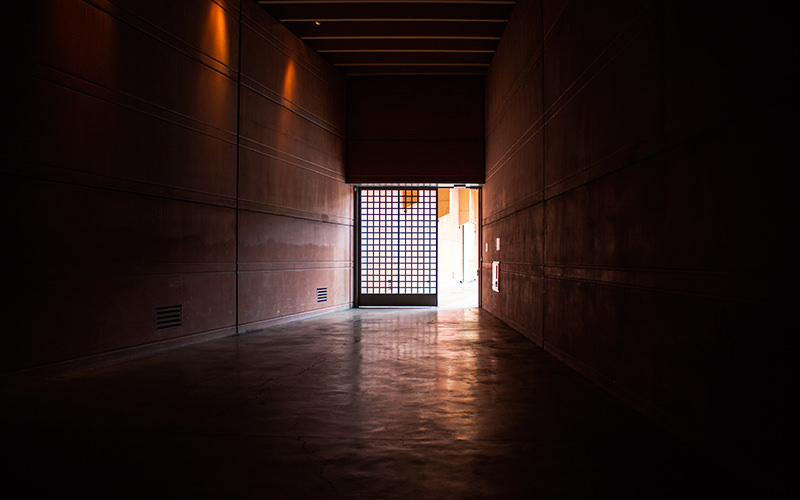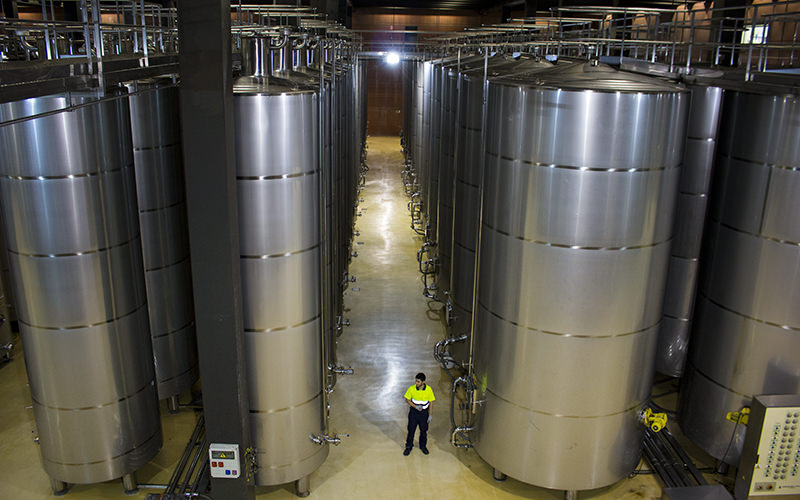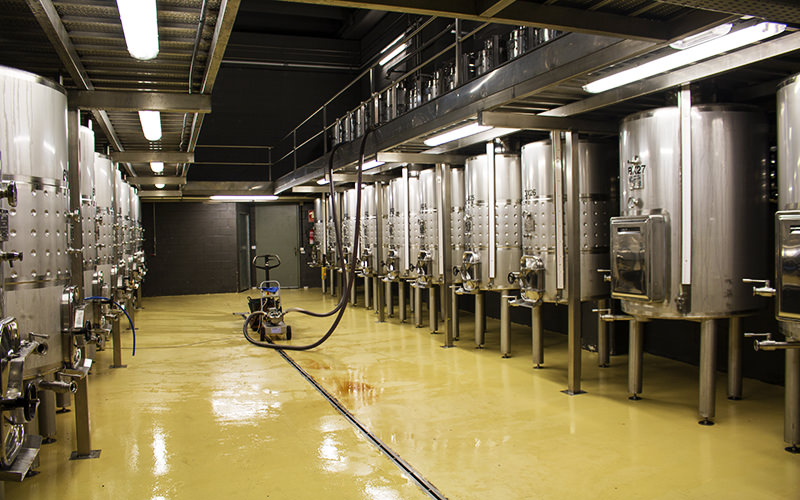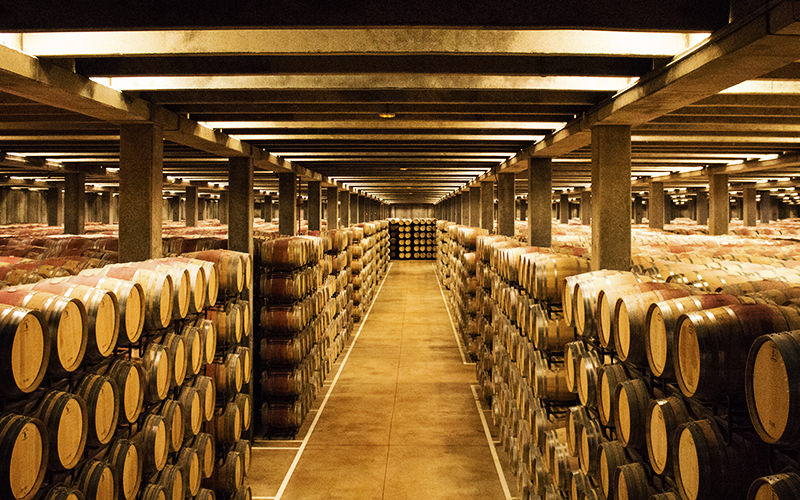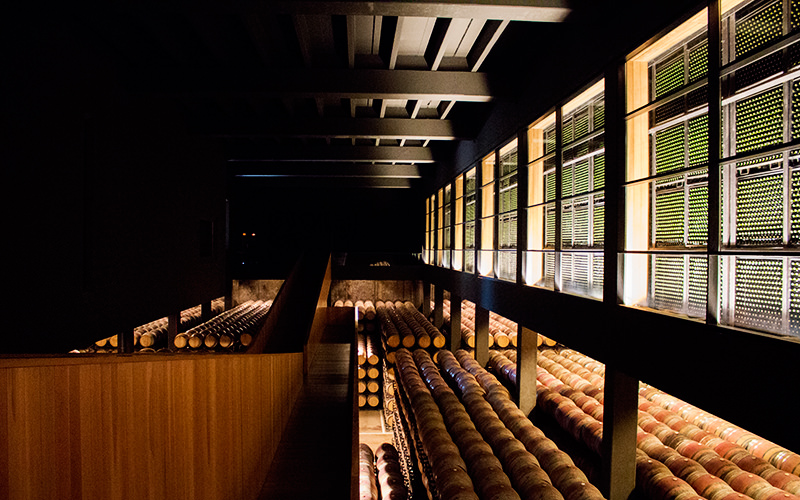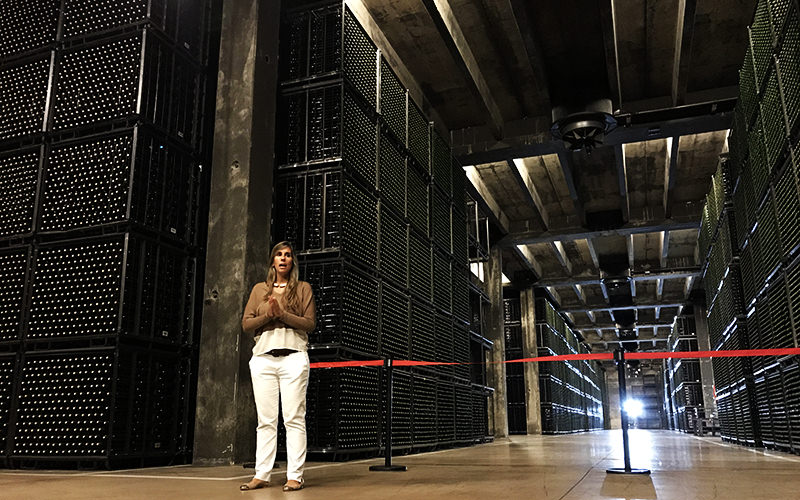Spain’s renowned Rioja wine region is dotted with both traditional wineries and others that push the boundaries of modern design. Surprisingly, Rioja’s largest winery is perhaps its most architecturally significant.
Designed by architect Ignacio Quemada Sáenz-Badillos in 2001, Campo Viejo appears from the distance as two small, modern buildings sandwiched between rows of vines on one side, and a dramatic drop on the other. Quemada sought to build something that wouldn’t “ruin” the natural beauty of its surroundings. His solution? Bury the 480,000-plus-square-foot structure underground.
To get a sense of how such a large winery can be hidden from view, consider this site elevation and a Google Maps 3-D rendering.
The winery’s two surface side structures can be seen from nearby vineyards.
Burying the winery underground helps regulate the temperature, essential for winemaking.
The sheer expanse of winery operations is evidenced by these sizable fermentation tanks, plus a human for scale.
Adjacent to the main fermentation tank room is a far smaller “experimental winery.” One of the first commercial products to emerge from here is the winery’s Tempranillo Blanco-Virua blend. Tempranillo Blanco was discovered in 1988.
The barrel-aging room is far too large to capture with just one photo. But we’ll try.
Bottle aging occurs a floor above the cavernous barrel-aging room.
Clara Canals, one of the three women on the winemaking team at Campo Viejo, explains the scale of the bottle-aging efforts.
Don't Miss A Drop
Get the latest in beer, wine, and cocktail culture sent straight to your inbox.
